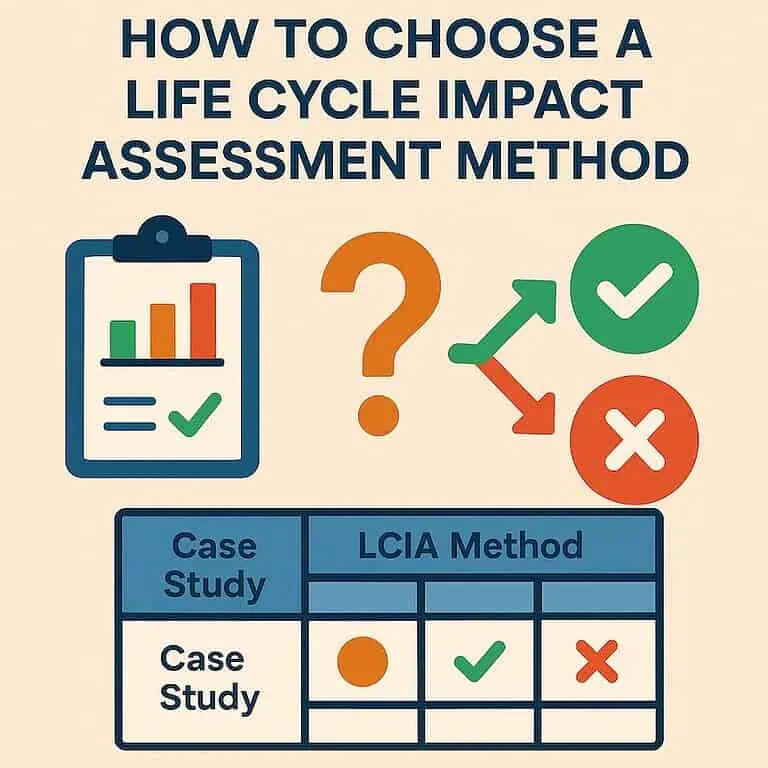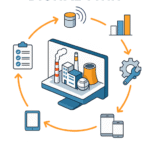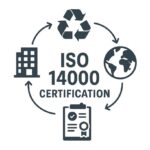
How to Choose the Correct Life Cycle Impact Assessment (LCIA) Method for Your LCA Study
Life Cycle Impact Assessment (LCIA): A Deeper Dive
Life Cycle Impact Assessment (LCIA) is the third phase of a Life Cycle Assessment (LCA) according to the ISO 14040 and ISO 14044 standards. It serves as the link between the environmental inventory results and the actual environmental impacts. LCIA translates emissions and resource use data from the Life Cycle Inventory (LCI) into environmental impact indicators that help stakeholders understand potential environmental consequences.
The LCIA process typically involves the following steps:
Selection of Impact Categories – Choosing relevant environmental issues (e.g., climate change, acidification, toxicity).
Classification – Assigning LCI results to the selected impact categories.
Characterization – Applying characterization factors to calculate impact category indicators.
(Optional) Normalization, Grouping, and Weighting – Helps with interpretation and communication.
The choice of LCIA method determines the modeling approach, regional specificity, and the type of results (midpoint vs endpoint) that the study will present.
Several LCIA methods have been developed globally, each reflecting different modeling principles, regional considerations, and impact category coverage. Here are some of the most widely used methods:
ReCiPe 2016 – Balances midpoint and endpoint modeling; widely used in Europe.
EF Method v3.1 – Developed for the EU Environmental Footprint project; highly detailed and standardized.
CML-IA Baseline – Characterization at midpoint level; classic method with broad impact category support.
TRACI – Tailored for North American environmental conditions.
IMPACT 2002+ – Integrates midpoint and endpoint modeling in a single framework.
ILCD (International Reference Life Cycle Data System) – Developed by the EU Commission; precursor to EF.
IPCC GWP (Global Warming Potential) – Focused exclusively on climate change categories.
USEtox – Focuses on toxicity modeling (human and eco-toxicity).
EDIP 2003 – Developed in Denmark, strong focus on resource depletion and waste.
Swiss Ecoscarcity – Damage-oriented method applying scarcity weighting.
Selecting an appropriate LCIA method depends on multiple parameters. Here’s a breakdown of key decision-making criteria:
1. Geographical Context
Use TRACI for U.S.-based assessments.
Prefer EF v3.1 or ILCD for studies targeting European markets or EU regulations.
2. Regulatory or Program Requirements
EPDs (Environmental Product Declarations) under EN 15804 often recommend CML, ReCiPe, or EF.
For PEF/OEF-compliant studies, EF v3.1 is mandated.
3. Impact Category Needs
For detailed toxicity modeling, use USEtox.
For resource depletion or land use: ReCiPe, IMPACT 2002+, or EDIP.
For exclusive GWP modeling: IPCC 2021 GWP100.
4. Type of Study
Product Design: ReCiPe (balanced midpoint/endpoint).
Policy Support or Regulation: EF or ILCD.
Simplified or Comparative LCA: CML-IA or TRACI.
5. Data Compatibility
Ensure compatibility with the LCI database used (e.g., ecoinvent, GaBi, or ELCD).
6. Audience & Communication Level
For lay or public communication: ReCiPe (endpoint indicators).
For scientific publications: Midpoint-focused methods like CML or EF.
| Case Study / Scenario | ReCiPe 2016 | EF v3.1 | CML-IA | TRACI | IMPACT 2002+ | ILCD | IPCC GWP | USEtox | EDIP 2003 | Swiss Ecoscarcity |
|---|---|---|---|---|---|---|---|---|---|---|
| EPD for European construction product | ✅ | ✅ | ✅ | 🟠 | 🟠 | ✅ | ✅ | ✅ | 🟠 | 🟠 |
| LCA of U.S. industrial product | 🟠 | ❌ | 🟠 | ✅ | ✅ | 🟠 | ✅ | ✅ | 🟠 | ❌ |
| Global warming impact analysis only | ❌ | ❌ | ❌ | ❌ | ❌ | ❌ | ✅ | ❌ | ❌ | ❌ |
| Comparative LCA for product design (midpoints) | ✅ | ✅ | ✅ | ✅ | ✅ | 🟠 | ✅ | ✅ | 🟠 | 🟠 |
| Human and eco-toxicity assessment | 🟠 | ✅ | 🟠 | ❌ | 🟠 | 🟠 | ❌ | ✅ | ❌ | ❌ |
| Academic research in Europe | ✅ | ✅ | ✅ | 🟠 | ✅ | ✅ | ✅ | ✅ | ✅ | 🟠 |
| National-level sustainability policy modeling | 🟠 | ✅ | ❌ | ✅ | ✅ | ✅ | ✅ | 🟠 | 🟠 | ✅ |
| Resource scarcity footprint | ✅ | ✅ | 🟠 | ❌ | ✅ | 🟠 | ❌ | ❌ | ✅ | ✅ |
| Water footprint and ecotoxicity modeling | 🟠 | ✅ | 🟠 | ❌ | 🟠 | 🟠 | ❌ | ✅ | ❌ | 🟠 |
| Circular economy-related product assessment | ✅ | ✅ | 🟠 | ❌ | 🟠 | 🟠 | ❌ | 🟠 | ✅ | ✅ |
Legend:
✅ = Recommended 🟠 = Applicable with caution / limitations ❌ = Not recommended
Questions to Ask Yourself Before Choosing an LCIA Method
To ensure you’re selecting the most appropriate LCIA method, consider the following diagnostic questions:
-
Where will the results of my LCA be used (regionally)?
-
Am I modeling for an EU, U.S., or global audience?
-
-
Is there a standard, regulation, or EPD program I’m aligning with?
-
Does it mandate or recommend a specific LCIA method?
-
-
What impact categories are most critical to my study?
-
Do I need detailed results for climate change, toxicity, water use, or resource depletion?
-
-
What type of LCA study am I conducting?
-
Is it for product design, policy formulation, academic research, or a public communication tool?
-
-
Do I need midpoint or endpoint indicators—or both?
-
What level of detail or interpretation is expected by the stakeholders?
-
-
Is my inventory data compatible with the method I plan to use?
-
Can my LCI database be aligned with the characterization factors?
-
-
What is the expected level of transparency or reproducibility?
-
Will I need to explain and justify my method in publications or audits?
-
-
Is the method actively maintained or widely accepted?
-
Are there recent updates, community support, or validation tools?
-
-
Do I require normalization or weighting?
-
Does the method support or provide regionally relevant weighting sets?
-
-
What is my own level of expertise and ability to interpret results?
-
Will I benefit from simplified interpretation (e.g., endpoint indicators), or can I handle more granular midpoint indicators?
By systematically answering these questions, you will be able to self-diagnose the suitability of each LCIA method for your unique project context.
Final Thoughts
The choice of LCIA method is not trivial—it shapes the interpretation and credibility of your study. Each method has strengths and trade-offs, and selecting the appropriate one depends on aligning method characteristics with study goals, regional context, and communication needs. In advanced applications, hybrid or multi-method approaches are also valid, especially for comparative assertions or sector-wide assessments.
Understanding the logic and boundaries behind each method ensures not only methodological rigor but also supports meaningful and actionable sustainability outcomes.

🔍 Ready to Master LCA with Confidence?
Whether you’re just starting your sustainability journey or looking to deepen your expertise, DEISO’s Life Cycle Assessment (LCA) Professional Training Programs are designed to equip you with the skills, tools, and frameworks needed to excel.
✅ Learn directly from experts with decades of experience
✅ Gain practical, hands-on insights into LCIA methods and tools
✅ Applicable to industry, academia, consulting, and policy work
✅ Flexible delivery: online, onsite (Tokyo), or hybrid
🎓 Enroll today and transform your LCA capabilities into impactful decisions.
Share this:
- Click to email a link to a friend (Opens in new window) Email
- Click to share on LinkedIn (Opens in new window) LinkedIn
- Click to share on X (Opens in new window) X
- Click to share on Facebook (Opens in new window) Facebook
- Click to share on WhatsApp (Opens in new window) WhatsApp
- Click to share on Reddit (Opens in new window) Reddit
- Click to print (Opens in new window) Print
- More
- Click to share on Tumblr (Opens in new window) Tumblr
- Click to share on Threads (Opens in new window) Threads
- Click to share on Pinterest (Opens in new window) Pinterest
- Click to share on Pocket (Opens in new window) Pocket
- Click to share on Telegram (Opens in new window) Telegram
- Click to share on X (Opens in new window) X










